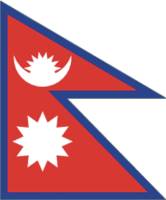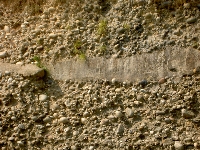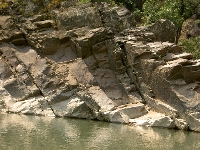Special Program for International Students
GRADUATE COURSE IN EARTH SCIENCE
& GEOENVIRONMENTAL SCIENCE
Current MEXT students



Ashok Sigdel (Nepal)
Email: sigdel.ashok@gmail.com
Thesis title: Paleo-environmental study of the Siwalik Group of the Karnali River section, Nepal Himalaya.
Supervisor: Assoc. Prof. Tetsuya Sakai (2008-2010).
The proposed study area is located in the far west of Nepal. In this area, the Siwalik succcession is well exposed along the Karnali River section. The Karnali River exposures offers a stratigraphic section about 5000m thick, representing the complete series from the lower to upper Siwalik succession. The lower part (about 3560 m) of the section has been dated at 15.8 to 5.2 Ma by magnetostratigraphy. The overall age of the section is 15.8 to 3.9 Ma. It is thus the oldest section of the Siwalik Group in Nepal.
Magnetic polarity of the rocks along this section has already been measured, but the lithostratigraphy has not been described to date. The excellent exposure and the established magnetostratigraphy mean the area is well suited for the study of the evolution of the fluvial system that deposited the sediments. Similarly, paleontological, paleohydrological and paleoclimatic studies are essential for the interpretation of paleoenvironment. There is an age gap of about 2 Ma between the Karnali River section and other Siwalik sections. In this age gap, climatic change, fluvial system and tectonics activities have not been properly studied.
The main objectives of my research are:
- To delineate detailed lithostratigraphy and facies of the Siwaliks in the Karnali section.
- To study the paleoclimatic and paleohydrological characteristics of the Karnali section.
- To decipher the sedimentation history, paleoenviroment and tectonic events.
- To compare the paleoenvironmental conditions with other Siwalik sections in the Nepal Himalayas.
To achieve the goals of this study, I will undertake detailed fieldwork to enable preparation of detailed lithological logs for facies analysis. Petrographic study will be undertaken to prepare a detailed qualitative and quantitative database and description of all rocks. Mineralogical constituents of the sandstones will be determined using petrographic microscope and grain size analysis. Major element, trace element and other compositions of the sediments will be used to study the provenance.
I hope my study will reveal the tectonic history, climatic changes during the deposition of the Siwalik rocks, and concomitant changes in the fluvial system. The lithostratigarphy of the proposed study area will be established. From the petrographical analysis, the source of the sediments, sedimentation rates, and transportation mode will become evident. Analysis of sediments in terms of their composition and properties are also expected to indicate the sources of the sediments. The rate of uplift of the Himalaya ranges and intensification of monsoon climate will be determined by the study of changes in the fluvial system and sediment provenance by paleohydrological analysis. We expect to reconstruct the paleo-environment of the study area via the combination of these approaches and studies. I am sure that this study will contribute to further research and study of the Siwalik sections of the Nepal Himalaya.
